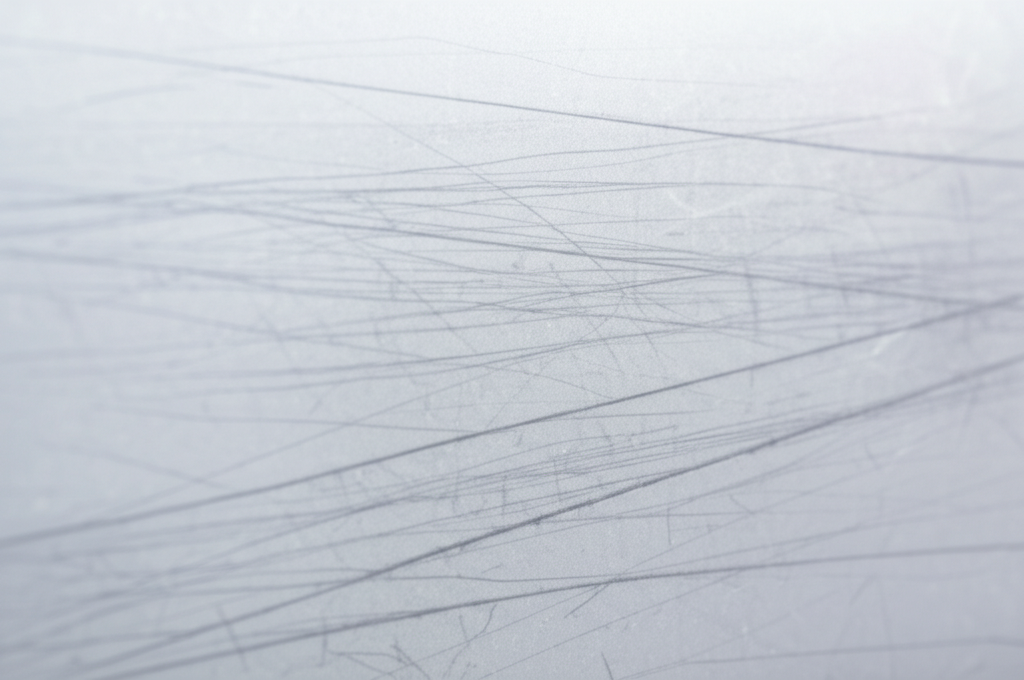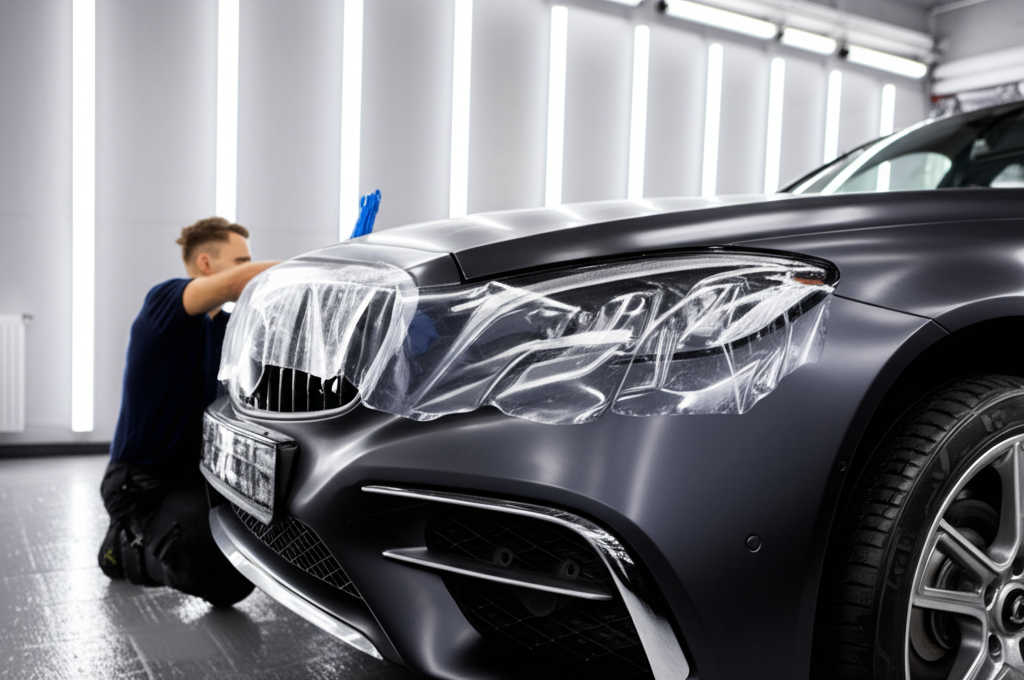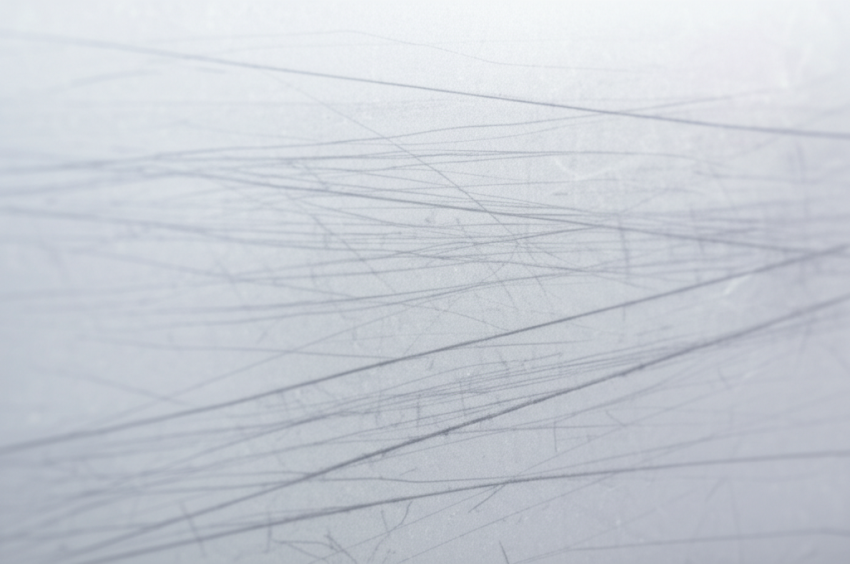You look at your beloved car, bathed in the warm Thai sunlight. You love driving it, the memories made, the journeys taken. But maybe the years, the bustling Bangkok traffic, or those unpredictable motorway chippings have taken their toll on its paintwork. Scratches, swirls, maybe some fading – it just doesn’t have that showroom sparkle anymore. The thought crosses your mind: “Maybe it’s time for a full repaint?” It sounds like a fresh start, a way to make your car look brand new again.
But then, the hesitation creeps in. You’ve heard the stories. “What if the new colour isn’t *exactly* the same as the original?” “Will it look obviously repainted?” And the big one: “Will a full repaint hurt my car’s resale value?” Suddenly, the dream of a perfect finish is clouded by worry. You’re stuck, wanting a change but fearing the consequences of a traditional repaint. Does this sound familiar? You’re not alone. Many car owners in Thailand face this exact dilemma.

Meet Khun Veerachai: A Familiar Story
Khun Veerachai, a marketing manager based in Chiang Mai, faced this very situation with his five-year-old German sedan. He adored his car, but the daily commute and occasional trips up Doi Suthep had left their marks. Minor stone chips dotted the bonnet, and fine scratches were visible on the doors under the right light. He initially booked a consultation at a reputable paint shop, excited about restoring its former glory.
During the discussion, however, his concerns grew. The painter, while skilled, couldn’t absolutely guarantee a perfect factory match for his metallic grey paint, especially considering potential fading on other panels. He also mentioned that, while a high-quality repaint is good, discerning buyers often prefer factory original paint, potentially impacting the car’s value when Veerachai eventually decided to sell. Discouraged, Veerachai started researching alternatives.
That’s when he discovered high-quality Paint Protection Film (PPF). Initially, he thought PPF was just a clear layer for preventing scratches on new cars. But he learned modern PPF offered much more: self-healing properties for minor swirls, incredible gloss enhancement, and even options for coloured PPF that could change the car’s look *without* touching the original paint underneath. Intrigued, he visited a specialist PPF installer.
The process was meticulous. His car was thoroughly washed and decontaminated. Clay bar treatment removed embedded impurities. Then, skilled technicians carefully applied premium, pre-cut PPF panels to his entire car. The result? Stunning. The PPF was virtually invisible, yet the underlying paint was now shielded from chips, scratches, UV damage, and environmental contaminants. More importantly, the film’s high gloss finish made his original grey paint look deeper and richer than ever before. He achieved a ‘better than new’ look while preserving the precious factory paint and alleviating all his worries about colour mismatch and depreciation.

PPF vs. Full Repaint: A Head-to-Head Comparison
Understanding the key differences between PPF and a full repaint is crucial for making an informed decision. Let’s break down the critical factors:
| Feature | Full Car Repaint | Paint Protection Film (PPF) |
|---|---|---|
| Primary Goal | Repair significant damage; Complete colour change. | Protect original paint; Enhance gloss; Prevent future damage; Reversible colour change (with colour PPF). |
| Paint Protection | New paint layer is vulnerable to new damage immediately. Offers no inherent protection beyond standard paint. | Excellent protection against stone chips, light scratches, swirl marks, bug splatter, bird droppings, UV rays, and chemical etching. Many films have self-healing properties for minor scratches. |
| Original Paint Preservation | Original factory paint is sanded down and covered permanently. Cannot be restored. | Original paint is completely preserved underneath the film. |
| Reversibility | Effectively irreversible. Returning to factory paint is extremely difficult and costly, if not impossible. | Fully reversible. Can be professionally removed, revealing the preserved original paint underneath. Ideal for leased vehicles or maintaining future options. |
| Colour Matching Risk | Significant risk, especially with metallic or pearlescent paints. Factors like application technique, paint batch, and adjacent panel fading can lead to noticeable differences. | Not applicable for clear PPF (enhances original colour). Coloured PPF offers consistent, uniform colour across the entire vehicle without factory paint matching issues. |
| Impact on Resale Value | Can often decrease resale value, as buyers may suspect hidden accident damage or prefer verifiable factory paint. Quality varies significantly. | Generally neutral to positive. Preserving the original paint in pristine condition is a major selling point. High-quality PPF installation is seen as a valuable addition. |
| Durability / Lifespan | Depends heavily on prep work, paint quality, and clear coat applied. Can last many years but is susceptible to damage from day one. | High-quality PPF typically lasts 5-10+ years, often warrantied against yellowing, bubbling, or cracking. Designed to withstand harsh conditions like Thailand’s heat and UV. |
| Indicative Price Range (Thailand) | Highly variable (e.g., 30,000 THB – 150,000+ THB) depending on car size, paint complexity, shop reputation, and level of prep work. | Variable (e.g., 50,000 THB – 200,000+ THB) depending on car size, coverage (full/partial), film quality (brand, thickness, features), and installer expertise. Can be comparable or higher than a repaint initially. |
| Installation Time | Several days to weeks, including prep, painting, curing, and finishing. | Typically 1-5 days, depending on coverage and complexity. |
| Maintenance | Standard car washing procedures. New paint may require gentle treatment initially. Waxing/sealants recommended. | Requires specific PPF-safe washing techniques (avoid high-pressure jets near edges). Specialised top coats or sealants can enhance longevity and hydrophobicity. Avoid abrasive polishes. |
| Best Suited For | Cars with significant, widespread paint damage (deep scratches, rust, peeling clear coat) where protection is secondary to repair. Owners desiring a permanent colour change and accepting the potential resale impact. | New or well-maintained cars needing protection. Owners wanting to preserve factory paint and resale value. Those desiring a high-gloss finish or a reversible colour change. Protecting high-impact areas or full vehicle coverage. |
Peace of Mind: What Car Owners Say
The relief experienced by car owners who choose PPF, especially those previously worried about repainting, is palpable:
“I almost repainted my Honda Civic due to motorway chips. A friend recommended PPF instead. Best decision ever! The car looks incredible, the original paint is safe, and I sleep better knowing its value isn’t compromised. No more worrying about every little stone on the road!” – Khun Preeya, Bangkok
“My BMW M4 is my pride and joy. The thought of repainting it gave me nightmares about colour matching. I opted for a full wrap with top-tier clear PPF. The gloss is insane, and it shrugs off minor scratches. It cost a bit upfront, but the peace of mind knowing the factory ‘Yas Marina Blue’ is perfect underneath is priceless.” – Mr. David L., Phuket
“I wanted a satin black look for my Toyota Fortuner but didn’t want to repaint. Coloured PPF was the answer! It looks amazing, completely changed the vibe, and I know I can remove it if I ever want to sell the car in its original white. It protects way better than paint too.” – Khun Somchai, Pattaya
The common theme? A shift from anxiety about potential repaint problems (colour mismatch, devaluation) to confidence and satisfaction, knowing their investment is protected and looks fantastic.
Ready to Protect and Enhance Your Ride?
If you’re sitting on the fence about repainting your car, worried about getting the colour wrong or hurting its future value, Paint Protection Film offers a compelling, modern solution tailored to address those exact concerns. Preserve your car’s original beauty, shield it from the rigours of Thai roads, and enjoy a flawless finish with confidence.
Still have questions? Unsure if PPF is the right choice for your specific vehicle and needs? Our team of experienced professionals is here to help. We can discuss your car’s condition, show you different PPF options (clear, matte, coloured), and provide a personalised recommendation.
Contact us today for a free consultation and quote!
📱 Want to learn more about car wrap & paint protection?
Feel free to reach us on LINE:

🌐 Official Website: https://tpuwraps.com
Frequently Asked Questions (FAQ)
- Q: Can PPF fix existing deep scratches or paint chips?
- A: No, PPF is designed to protect the paint underneath, not repair existing damage. Minor swirl marks might be masked by the film’s adhesive and gloss, but deeper scratches, chips, or rust need to be professionally repaired *before* PPF application for the best results and to prevent issues like trapped moisture.
- Q: Will PPF turn yellow or peel over time, especially in Thailand’s hot climate?
- A: This was a concern with older generations of PPF. However, modern, high-quality PPF from reputable brands uses advanced thermoplastic polyurethane (TPU) with strong UV inhibitors. These films are specifically designed to resist yellowing, staining, cracking, and peeling, even in harsh sunlight and heat like Thailand’s. Most top brands offer warranties (often 5-10 years) against such defects when professionally installed.
- Q: Is PPF significantly more expensive than a full car repaint?
- A: The cost can vary greatly for both options. A budget repaint might be cheaper than premium full-car PPF. However, a high-quality repaint from a top bodyshop can easily cost as much as, or even more than, a full PPF installation. When comparing costs, consider the long-term value: PPF protects your original paint (preserving resale value) and prevents future minor damage costs, whereas a repaint offers no protection and might decrease value.
- Q: Can I wash my car normally with PPF installed?
- A: Yes, you can wash your car regularly. However, it’s recommended to use PPF-safe procedures. Use the two-bucket wash method, pH-neutral car shampoo, and soft microfibre towels. Avoid using high-pressure washers directly on the film’s edges, as this could potentially lift them over time. Automatic car washes with harsh brushes are generally not recommended. Many installers offer specific care instructions.
- Q: If I choose coloured PPF, does it look like real paint?
- A: High-quality coloured PPF can look remarkably similar to paint, offering deep gloss, satin, or matte finishes. While a trained eye might be able to tell up close (especially at panel edges), for most people, it provides a stunning and convincing colour change. It also offers the same protective benefits as clear PPF, something paint alone cannot do.
The Smart Choice for Your Car’s Future
Choosing between a full repaint and Paint Protection Film isn’t just about aesthetics; it’s about making a smart decision for your vehicle’s longevity and value. While repainting has its place for severe damage repair, it comes with inherent risks regarding colour accuracy and potential depreciation – the very things that cause hesitation.
PPF directly addresses these concerns. It offers unparalleled protection for your valuable original paint, enhances its appearance, and provides a reversible solution that maintains or even increases your car’s desirability. In the context of Thailand’s driving conditions and the importance of resale value, PPF emerges as a technologically advanced and often superior alternative for owners seeking a pristine look without compromise.
Don’t let the fear of a bad repaint hold you back from giving your car the care and look it deserves. Explore the world of Paint Protection Film and drive with renewed confidence and pride.

